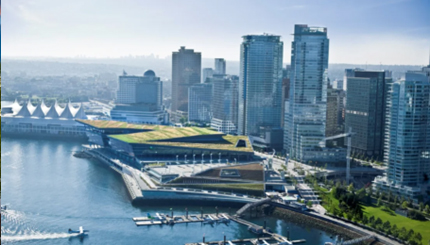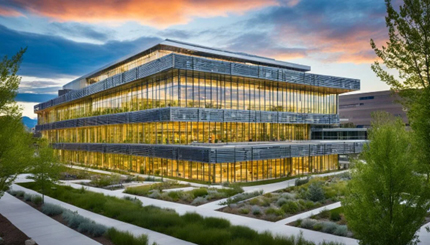Unlocking the Potential of Industrial Real Estate: Key Trends and Strategies
The industrial real estate sector is undergoing a transformative shift, driven by factors such as the rise of e-commerce, technological advancements, and an increased emphasis on sustainability. Understanding the current trends and outlook in industrial real estate is essential for creating effective property management strategies. Discover the key developments shaping this sector and how they can influence investment decisions.
Current Trends in Industrial Real Estate
E-Commerce and Logistics Boom
One of the most significant drivers of industrial real estate demand is the rapid rise of e-commerce. Consumers are increasingly leaning towards online shopping, which simultaneously increases the need for warehouses and distribution centers. The pandemic has accelerated this trend, which resulted in necessary adjustments in supply chains. This has had an impact in the demand for facilities located closer to urban centers – offering investors an opportunity to capitalize on this shift.
Automation and Technology Integration
Advancements in technology are also reshaping industrial properties. Automation tools and smart technologies, such as artificial intelligence, are being integrated into warehouses to improve efficiency and reduce operational costs. Property management strategies now need to include considerations for these technological upgrades, which can enhance tenant satisfaction and streamline operations.
Sustainability and Environmental Responsibility
Sustainability is no longer just a phase; it has become a crucial factor in real estate investment. Industrial properties are increasingly being designed or updated to meet green building standards, incorporating energy-efficient systems and sustainable materials. Investors are recognizing that eco-friendly properties not only appeal to a broader range of tenants but can also lead to cost savings in operations.


Shifts in Supply Chain Management
The recent disruptions in global supply chains have prompted companies to rethink their logistics strategies. Nearshoring, or relocating manufacturing closer to end markets, is gaining traction. This shift increases demand for industrial properties in regions previously overlooked. Investors should consider diversifying their portfolios to include locations that are strategically positioned for this trend.
Future Outlook: What Lies Ahead
Continued Growth in Demand
The demand for industrial real estate is expected to remain steady in the coming years. With e-commerce continuing to expand and businesses increasingly relying on logistics networks, the need for flexible, well-located industrial spaces will only increase. Investors should remain vigilant about emerging markets and locations that support this growth trajectory.
Emphasis on Flexibility and Adaptability
As the industrial sector evolves, properties that offer flexibility will be particularly attractive. Facilities designed for multi-use will likely outperform more traditional spaces. Investors should prioritize properties that can adapt to changing market demands.
Integration of Data Analytics
Data analytics is set to play a significant role in the future of property management. By utilising data to understand market trends, tenant behavior, and operational efficiencies, investors can make informed decisions that enhance the performance of their industrial portfolios. To stay competitive in the market, it’s important to implement strong data analytic strategies.
Impact on Property Management Strategies
Given these trends and insights, property management strategies in the industrial real estate sector must adapt accordingly. Below are a few key approaches:
- Enhanced Tenant Relations: Building strong relationships with tenants can lead to higher retention rates. Regular communication, understanding their needs, and being proactive in addressing concerns are essential.
- Investment in Technology: Embracing technology not only streamlines operations but also appeals to modern tenants. From smart building systems to advanced logistics management software, integrating these tools can enhance property value.
- Sustainability Initiatives: Implementing sustainability practices can attract environmentally conscious tenants and reduce operational costs. Property managers should consider energy audits and invest in renewable energy sources.
- Market Diversification: Investing in various geographical areas and property types can alleviate risks associated with market fluctuations. Staying informed about regional growth patterns can guide investment decisions.
- Adapting to Market Needs: Regularly monitoring market trends and tenant requirements will ensure properties remain competitive. Flexibility in design and use will become increasingly important.
Conclusion
The industrial real estate sector is experiencing dynamic growth, fueled by the rise of e-commerce, technological innovations, and an increasing emphasis on sustainability. Recognizing these trends and adjusting property management strategies will be crucial for unlocking the full potential of investments. By staying informed and flexible, investors can effectively navigate this changing landscape and seize the opportunities that await.